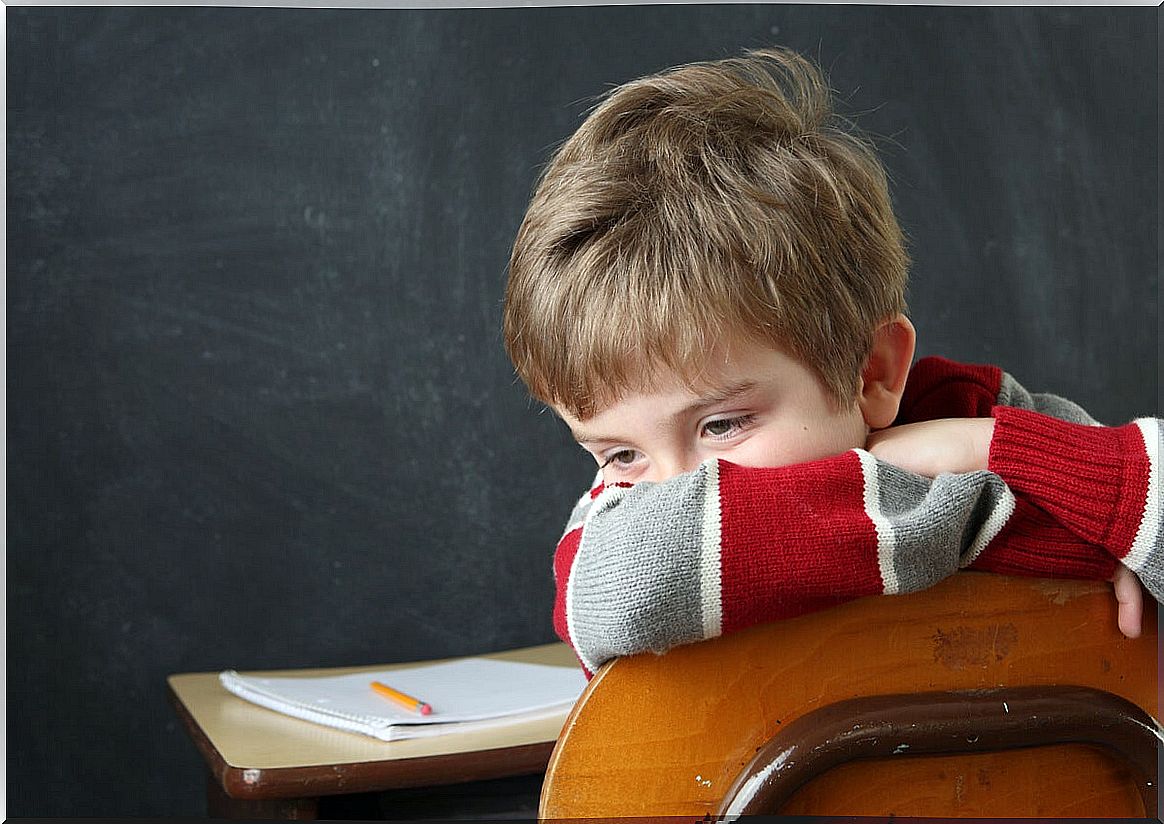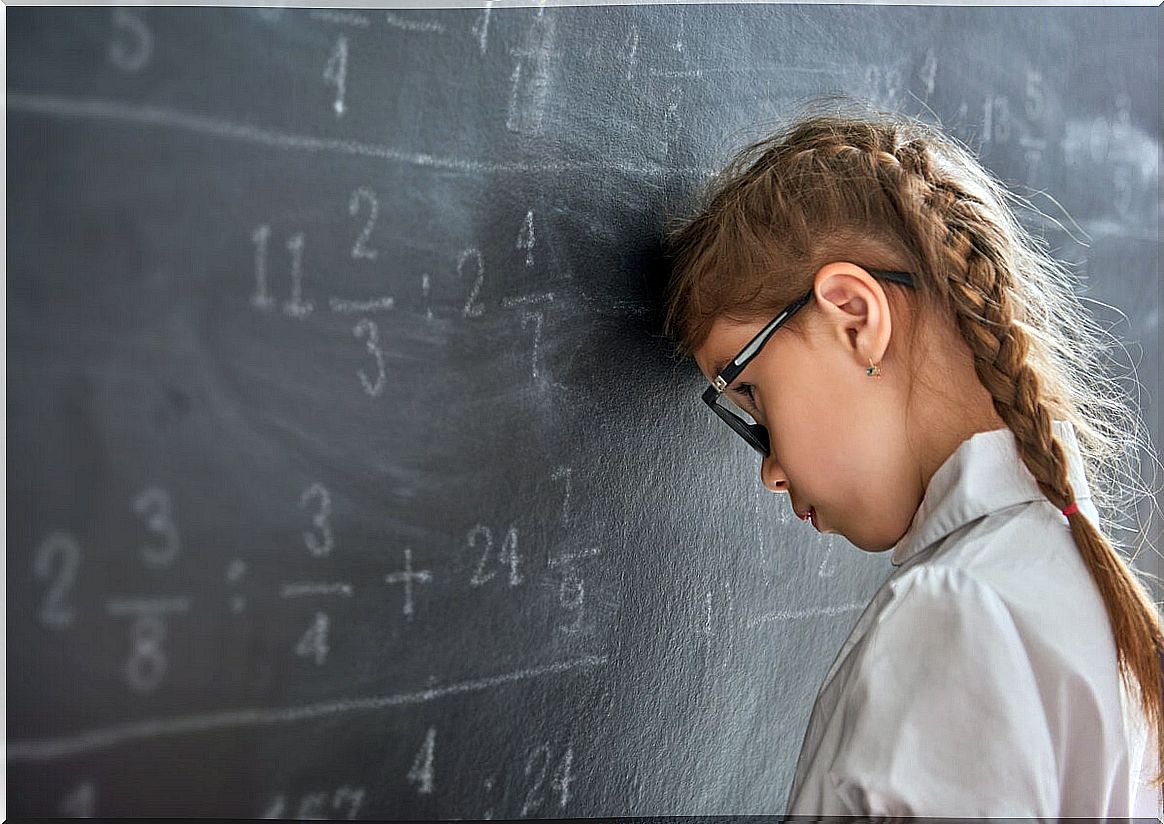School Failure: Types, Causes And Prevention

What is school failure and why does it occur? It is a problem where many factors are at stake: specific to the educational system, the student, the context. .. In this article we will address its possible causes, what types of school failure exist and how to prevent it.
Did you know that, according to the Labor Force Survey (EPA) (2019), early school leaving in Spain stands at 17.9% ? In addition, 7% did not complete ESO. In the rest of the European countries, the average is well below (10.6%). These percentages include all those people who left their studies between the ages of 18 and 24 (after completing ESO at most).
School failure: what is it?
School failure is used to define the group of people who have not managed to successfully complete the different stages of compulsory education. Behind this phenomenon is early school leaving, socio-family problems and significant learning difficulties in the student.
That is to say, it is about the difficulty to pass compulsory education, which in Spain is established until the age of 16 (4th of ESO). We are talking about a social and educational problem, and as such it requires social and educational policies to be prevented.

The concept: problematic?
However, according to authors such as Marchesi (2003), the concept of “school failure ” is not accepted by the entire educational community and this is due to its strong negative charge. As a result, there are authors who have proposed the following alternative names: ” students with low academic performance “ or ” students who leave the educational system without sufficient preparation “.
In any case, as we will see, the first alternative denomination would not be 100% correct either, since sometimes students drop out of compulsory education due to problems beyond their academic performance. In the causes section we will talk about it.
Types
Not all school failures are the same. In fact, we find four types of school failure, according to their characteristics (when it appears, possible causes …):
Primary
It is the school failure that appears in the first years of schooling, due to a significant lack of attention on the part of the student, his low performance, stagnation with respect to other classmates …
Secondary
The second type is generally manifested in the last stages of Primary (and especially in the passage to Secondary, between 12 and 13 years). It usually appears in students who until now had obtained good academic results. Its causes are usually: going from school to high school, difficulties in adolescence …
Circumstantial
Circumstantial school failure is transitory. It is isolated, since it appears at a specific time and due to exceptional causes, such as: death of one of the parents, change of school, bullying … It can be reversed if its causes are identified and treated correctly.
Habitual
Finally, the usual type of school failure appears when poor academic results are frequent in all the educational stages of the student. Generally, its causes include: learning problems, developmental delays, certain neurological diseases, unstructured families …
Causes of school failure
The causes of school failure are very disparate; Furthermore, we are not talking about a single cause as a triggering factor, but rather a set of factors that are related to each other. Among the most frequent causes behind this problem we find three types of causes: those that refer to the student, the environment or context and the educational system.
Student-related causes
If we look at the student, we can find some of the following causes (which does not imply that they always appear):
- Low level of effort.
- Low level of interest in school.
- Learning difficulties.
- High abilities (the student gets bored in class).
- Little or no motivation.
- Negative perception of the support received from parents.
- Little involvement in their learning process.
- Feelings of inadequacy.
- Learned helplessness.
- Negative attitudes and beliefs in relation to teaching.
- Self-esteem problems.
- Alterations in self-concept.
Causes depending on the environment
The causes also have to do with the environment (social and family factors). Some of them are related to:
- Profession of parents.
- Family socioeconomic level.
- Culture.
- Relationship of the student with his environment.
- Familiar structure.
- Family dynamics.
Causes of the educational system
Finally, we find a group of causes (or factors) related to the educational system itself. These have to do with its operation, and also with the role of the teacher:
- Teaching practice.
- Educative administration.
- Attitude and beliefs of the educational team.
- Management of the educational center.
- Teaching method.
- Teacher preparation and level.
- Teacher’s ability to motivate students.
Thus, school failure arises as a process that arises from the interrelation of many of these causes, most of the time belonging to the three areas mentioned. That is to say, a child, just because he is not motivated, it is difficult for him to leave his studies; normally other variables are added to the equation (for example: low self-esteem, little involvement of parents in their education, financial difficulties…).
How to prevent school failure?
School failure can – and should – be prevented. How? Through multidisciplinary approaches, since it is a problem in which the well-being of the student is compromised at a cognitive, physical, social and psychological level, in addition to the problems that are generated at an educational and social level. Some of the proposals that we found are the following:
Detection of difficulties
It is essential to detect possible difficulties in the student in time. Thus, it will be important to observe and analyze the student from an early age. It will be evaluated: their level of motivation, interest, attention, educational skills, level of development, intelligence, relationships with colleagues …
Individualized treatment and attention to diversity
It will be important that the educational system adapts to each of its students (and not the other way around). The fact of applying the same educational methods to such different students (among which are students with high abilities), can generate a lot of demotivation among students, which ends up causing school failure.
In this sense, the strengths and weaknesses of each child, their educational needs, etc. should be taken into account. This will require adequate training for teachers so that they can adapt their curricula and methodologies, and involve the entire educational community.

Changing educational methods
The educational methods should be flexible (and ideally, personalized, although it is not an easy task). We must bet on innovation (for example, introducing ICTs, enhancing emotional intelligence, contact with nature …) and teach students study methods that motivate and serve them.
School failure is a multi-causal problem, and as such, its possible causes must be analyzed in each case. Thus, fighting it will be an objective, but even more important: preventing it, preventing it from appearing. In this sense, the student’s motivation will be essential and therefore finding a way to motivate him during his learning can help him to continue studying, while still analyzing his specific context, his personal characteristics and his possible difficulties.
Every kid is a world! And every learning process, too.









